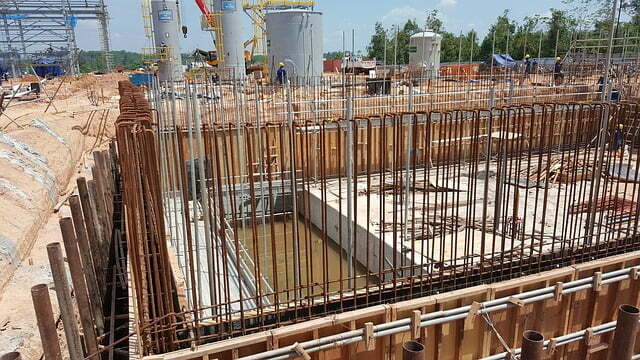Civil Engineering is the professional engineering discipline that designs and constructs structural works serving the general public, including dams, bridges, aqueducts, canals, highways, power plants, sewerage systems, and other infrastructure.
The term was first used in the 18th century to distinguish the newly recognized profession from military engineering, which had been preeminent until then.
From the earliest times, however, engineers have engaged in peaceful activities, and many of the civil engineering works of ancient and medieval times—such as the Roman public baths, roads, bridges, and aqueducts; the Flemish canals; the Dutch sea defenses; the French Gothic cathedrals; and many other monuments—reveal a history of inventive genius and persistent experimentation.
Table of Contents
History/ Beginning of Civil Engineering
The beginnings of civil engineering as a separate discipline may be seen in the foundation in France in 1716 of the Bridge and Highway Corps, out of which in 1747 grew the École Nationale des Ponts et Chaussées (“National School of Bridges and Highways”).
Its teachers wrote books that became standard works on the mechanics of materials, machines, and hydraulics, and led British engineers who learned French to read them.
Design and calculation replaced the rule of thumb and empirical formulas, and as expert knowledge was codified and formulated, the nonmilitary engineer moved to the front of the stage.
Talented, if often self-taught, craftsmen, stonemasons, millwrights, toolmakers, and instrument makers became civil engineers.
In Britain, James Brindley began as a millwright and became the foremost canal builder of the century; John Rennie was a millwright’s apprentice who eventually built the new London Bridge; Thomas Telford, a stonemason, became Britain’s leading road builder.
John Smeaton, the first to call himself a civil engineer, began as an instrument maker. His design of Eddystone Lighthouse (1756–59), with its interlocking masonry, was based on a craftsman’s experience. Smeaton’s work was backed by thorough research, and his services were in demand.
1771, he founded the Society of Civil Engineers (now known as the Smeatonian Society). Its object was to bring together experienced engineers, entrepreneurs, and lawyers to promote the building of significant public works, such as canals (and later railways), and to secure the parliamentary powers necessary to execute their schemes.
Their meetings were held during parliamentary sessions; the society still follows this custom.
The École Polytechnique was founded in Paris in 1794, and the Bauakademie was started in Berlin in 1799, but no such schools existed in Great Britain for another two decades.
This lack of opportunity for scientific study and the exchange of experiences led a group of young men to found the Institution of Civil Engineers in 1818.
The founders were keen to learn from one another and their elders, and in 1820, they invited Thomas Telford, by then the dean of British civil engineers, to be their first president.
Similar developments occurred elsewhere. By the mid-19th century, civil engineering societies existed in many European countries and the United States, and in the following century, similar institutions were established in almost every country in the world.

Formal education in engineering science became widely available as other countries followed the lead of France and Germany. In Great Britain, the universities, traditionally the seats of classical learning, were reluctant to embrace the new disciplines. University College, London, founded in 1826, provided a broad range of academic studies and offered a course in Mechanical Engineering.
Civil engineering was first taught at King’s College, London, in 1838, and in 1840, Queen Victoria founded the first chair of civil engineering and mechanics at the University of Glasgow, Scotland.
Rensselaer Polytechnic Institute, founded in 1824, offered the first courses in civil engineering in the United States. The number of universities worldwide with engineering faculties, including civil engineering, increased rapidly in the 19th and early 20th centuries. Civil engineering is taught today in universities worldwide.
Read More: Tips for Subcontractor To Win More Bids: The Quick guides
Civil engineering functions
The civil engineer’s functions can be divided into three categories: those performed before construction (feasibility studies, site investigations, and design), those performed during construction (dealing with clients, consulting engineers, and contractors), and those performed after construction (maintenance and research).
Feasibility studies
No major project today is started without an extensive study of the objective and preliminary studies of possible plans leading to a recommended scheme, perhaps with alternatives. Feasibility studies may cover alternative methods—e.g., bridge versus tunnel, in the case of a water crossing—or the route choice once the technique is decided. Both economic and engineering problems must be considered.
Also Read: Water Supply Design | Water Sources and Storage Tanks
Site investigations
A preliminary site investigation is part of the feasibility study, but a more extensive investigation is usually imperative once a plan has been adopted. Money spent on rigorous analysis of ground and substructure may save large sums later in remedial works or necessary changes in construction methods.
Since the load-bearing qualities and stability of the ground are such essential factors in any large-scale construction, it is surprising that a thorough study of soil mechanics did not develop until the mid-1930s.
Karl von Terzaghi, the founder of soil mechanics, dates its birth to 1936 when the First International Conference on Soil Mechanics and Foundation Engineering was held at Harvard University, and an international society was formed. Today, specialist societies and journals exist in many countries, and most universities with civil engineering faculty offer courses in soil mechanics.
Read More: University of Dar Es Salaam: What You Need To Know Right Now
Civil Engineering: Design
The design of engineering works may require the application of design theory from many fields, such as hydraulics, thermodynamics, or nuclear physics. Research in structural analysis and materials technology has opened the way for more rational designs, new design concepts, and a more excellent materials economy.
The theory of structures and the study of materials have advanced together as more refined stress analyses of structures and systematic testing have been done. Modern designers not only have advanced theories and readily available design data, but structural designs can now be rigorously analyzed by computers.
Construction
While a private client may initiate the promotion of civil engineering works, most work is undertaken by large corporations, government authorities, and public boards and authorities. Many of these have their engineering staff, but it is usual to employ consulting engineers for large, specialized projects.
The consulting engineer may be required first to undertake feasibility studies, then to recommend a scheme and quote an approximate cost. The engineer is responsible for the design of the works and supplies specifications, drawings, and legal documents in sufficient detail to seek competitive tender prices.
The engineer must compare quotations and recommend acceptance of one of them. Although not a party to the contract, the engineer’s duties are defined; the staff must supervise the construction, and the engineer must certify the completion of the work. Actions must be consistent with the duty to the client; professional organizations exercise disciplinary control over professional conduct. The consulting engineer’s senior representative on the site is the resident engineer.
A recent phenomenon has been the turnkey or package contract, in which the contractor undertakes to finance, design, specify, construct, and commission a project. In this case, the contractor engages the consulting engineer rather than the client.
The contractor is usually an incorporated company that secures the contract based on the consulting engineer’s specifications and general drawings. The consulting engineer must agree to any variations introduced and approve the detailed drawings.
Read More: College of Engineering and Technology (CoET): The Guides
Civil Engineering: Maintenance
The contractor maintains the work to the satisfaction of the consulting engineer. Responsibility for maintenance extends to ancillary and temporary works, which form part of the overall construction.
After construction, the contractor undertakes a maintenance period, and the payment of the final installment of the contract price is held back until released by the consulting engineer.
Central and local government engineering and public works departments are concerned primarily with maintenance, for which they employ direct labor.
Also Read: Biggest Cement Companies in the USA
Research
Research in the civil engineering field is undertaken by government agencies, industrial foundations, universities, and other institutions. Most countries have government-controlled agencies, such as the United States Bureau of Standards and the National Physical Laboratory of Great Britain, involved in a broad spectrum of research and establishments in building research, roads and highways, hydraulic research, water pollution, and other areas. Many are government-aided but depend partly on income from research work promoted by industry.
Read More: Shallow Foundations For Medium Structures
Branches of civil engineering
In 1828, Thomas Tredgold of England wrote:
The most important object of Civil Engineering is to improve the means of production and of traffic in states, both for external and internal trade. It is applied in the construction and management of roads, bridges, railroads, aqueducts, canals, river navigation, docks and storehouses, for the convenience of internal intercourse and exchange; and in the construction of ports, harbours, moles, breakwaters and lighthouses; and in the navigation by artificial power for the purposes of commerce.
It is applied to the protection of property where natural powers are the sources of injury, as by embankments for the defense of tracts of country from the encroachments of the sea, or the overflowing of rivers; it also directs the means of applying streams and rivers to use, either as powers to work machines, or as supplies for the use of cities and towns, or for irrigation; as well as the means of removing noxious accumulations, as by the drainage of towns and districts to . . . secure the public health.
A modern description would include the production and distribution of energy, the development of aircraft and airports, the construction of chemical process plants and nuclear power stations, and water desalination. These aspects of civil engineering may be considered under the following headings: construction, transportation, maritime and hydraulic engineering, power, and public health.
Therefore, Civil engineers can take on various roles within specific branches of civil engineering. Branches of civil engineering are:
- Structural Engineering
- Environmental Engineering
- Geotechnical Engineering
- Transportation Engineering
- Water Resource Engineering
- Surveying
- Construction Engineering
- Municipal Engineering
Here’s a brief overview of a few of these critical subdivisions.
Read More: Plant Maintenance: A Quick Guide to Get Started Quickly
Structural Engineering
The structural engineering branch of civil engineering includes all structural analysis and design. Structural Engineers are responsible for analyzing and designing structures that can safely bear loads and resist stress and force. Their designs must satisfy all project specifications and safety requirements.
Their structures must withstand natural disasters and environmental conditions and meet design criteria and codes to ensure public safety.
The projects structural engineers work on include:
- Working with architects to design and construct buildings such as facilities such as wastewater treatment plants and buildings, including skyscrapers, apartments, churches, and more
- Designing bridges, tunnels, or overpasses
- Analyzing the effect of wind on structures
- Evaluating how structures react to earthquakes
- Supervising the construction of structures, including houses, commercial buildings, and schools
- Consulting on structural work or repair
Having a structural engineer on hand for various purposes can benefit every structure being designed, built, or repaired.
Transportation Engineering
Roman roads and bridges were products of military engineering, but the pavements of McAdam and the bridges of Perronet were the work of civil engineers. So were the canals of the 18th century and the railways of the 19th, which, by providing bulk transport with speed and economy, lent a powerful impetus to the Industrial Revolution.
Today, civil engineering is concerned with an even larger transportation field—e.g., traffic studies, road, rail, and air system design, and construction, including pavements, dams, bridges, and tunnels.
The following is a list of some of the specialty areas that utilize the services of a transportation civil engineer:
- Highway transportation engineering
- Air transportation engineering
- Waterway transportation engineering
- Aerospace transportation engineering
- Coastal and ocean transportation engineering
- Urban transportation engineering
Example projects that use transportation engineers include:
- Highway or freeway improvements
- Redesigning intersections
- Evaluating stop signs or traffic signals
- Traffic impact analysis
- Developing city-wide traffic plans
There can be some overlap between the types of projects structural and transportation engineers work on, but transportation engineering focuses on the design and implementation of transportation infrastructures that are safe, comfortable, economical, convenient, and environmentally sound.
Also Read: Engineer | Definition, and History You Should Know Right Now
Maritime and hydraulic engineering
Harbor construction and shipbuilding are ancient arts. For many developing countries today, establishing a large, efficient harbor is an early imperative to serve as the inlet for industrial plants and needed raw materials and the outlet for finished goods.
In developed countries, the expansion of world trade, the use of larger ships, and the increase in total tonnage call for more rapid and efficient handling. The civil engineer is responsible for deeper berths, handling equipment (for example, for ore), and navigation improvements.
The development of water supplies was a feature of the earliest civilizations, and the water demand continues to rise today. In developed countries, the market is for industrial and domestic consumption, but in many parts of the world—e.g., the Indus basin—vast schemes are under construction, mainly for irrigation to help satisfy the food demand. These schemes are often combined with hydroelectric power generation to promote industrial development.
Today, dams are among the most significant construction works, and design development is promoted by bodies like the International Commission on Large Dams. The design of large impounding dams in places with population centers nearby requires the utmost safety engineering, emphasizing soil mechanics and stress analysis. Most governments exercise statutory control over engineers qualified to design and inspect dams.
Read More: Structural Elements: Everything You Need To Know About Beams
Power
Civil engineers have always played an important part in mining coal and metals; the driving of tunnels is a task common to many branches of civil engineering. In the 20th century, the design and construction of power plants advanced with the rapid rise in demand for electric power, and nuclear power stations added a whole new field of design and construction involving prestressed concrete pressure vessels for the reactor.
Exploiting oil fields and the discoveries of natural gas in significant quantities have initiated a radical change in gas production. Shipment in liquid form from the Sahara and piping from the bed of the North Sea have been among the novel developments. Vast pipelines have also been constructed in Venezuela and across the Canadian-U.S. border.
In the late 20th and early 21st centuries, demand for renewable energy increased as a climate-friendly alternative to fossil fuel use. Civil engineers have developed and installed vast solar and wind arrays in places like California, the United Kingdom, and China, and innumerable smaller constructions have been built worldwide, both on land and at sea. Other renewable energy sources include tidal and geothermal power, though their use is more geographically limited.
Read More: Unit Operations for Wastewater Treatment: The Complete Guide
Public health
Drainage and liquid-waste disposal are closely associated with antipollution measures and water reuse. The urban development of parts of water catchment areas can alter the nature of runoff, and river training and regulation produce changes in the pattern of events, resulting in floods and the need for flood prevention and control.
Modern civilization has created problems with solid-waste disposal, from manufacturing durable goods, such as automobiles and refrigerators, produced in large numbers with a limited life, to the small package, previously disposable, now often indestructible.
Civil engineers play a vital role in preserving the environment, principally through designing works that enhance rather than damage or pollute.
Read More: Structural Design: The Best Literature Review for Engineers
Water and Wastewater Engineering
Water and Wastewater engineers plan, design, and manage the construction of municipal water supply and wastewater treatment systems. Each type of system is designed to meet industry standards and codes to ensure that drinking water meets public safety requirements and that the discharged water from wastewater treatment systems will not negatively impact the environment.
Example projects Water and Wastewater engineers would be involved with include:
- Wastewater studies to determine the best and safest way to collect, treat, and transport blackwater, greywater, and irrigation water
- Working with districts, cities, or counties to develop potable water treatment facilities
Read More: ERB: Engineers Registration Board (What You Need To Know)
Environmental Engineering
The environmental engineering branch of civil engineering studies the effects of projects on the environment. Environmental Engineers study and evaluate impacts on cultural resources, noise impacts on threatened and endangered species, water quality, air quality, wetlands, and socio-economic effects.
Environmental engineers aim to identify a project’s environmental impacts and suggest ways to eliminate or mitigate those impacts. They also seek to help develop a project that has the least impact on the natural environment.
Example projects environmental engineers would be involved with include:
- Environmental evaluation, such as assessing project impacts on soil and groundwater
- Assessing wetlands and streams through delineation, determination, and categorization to accurately identify impacts
- Designing mitigation plans that eliminate or offset effects on environmental resources
- Presenting project implementation options for avoiding impacts on species of concern, including endangered species
- Helping to develop solutions to environmental issues like erosion control, water, or air pollution
- Working with districts, cities, or counties to solve stormwater runoff pollution issues
- Coordinating with agency oversight at the local, state, and federal levels to most reasonably protect environmental resources and achieve project goals
Also Read: Brick Masonry | Advantages and Disadvantages
This civil engineering division is crucial for long-term, sustainable projects that prioritize the environment and public health.
That’s all.
We hope this article helped you learn more about: What is Civil Engineering? | History and Functions. You may also want to learn Home Furniture | Meaning and Type, Engineer | Definition, History, Floor, and Decor: Types and Materials, and What is the Function of Buildings?
If you liked this article, please join WebsiteForEngineers on Telegram. You can also find us on Pinterest, Twitter, and Facebook.
Read More: What is Research Methodology?: The Ultimate Engineer’s Guide
FAQ
What is Civil Engineering?
Civil Engineering is the professional engineering discipline that designs and constructs structural works serving the general public, including dams, bridges, aqueducts, canals, highways, power plants, sewerage systems, and other infrastructure.
What is the Beginning of Civil Engineering?
The beginnings of civil engineering as a separate discipline may be seen in the foundation in France in 1716 of the Bridge and Highway Corps, out of which in 1747 grew the École Nationale des Ponts et Chaussées (“National School of Bridges and Highways”)
What are the functions of Civil Engineering?
Civil engineering functions can be divided into three categories: those performed before construction (feasibility studies, site investigations, and design), those performed during construction (dealing with clients, consulting engineers, and contractors), and those performed after construction (maintenance and research).
What are the branches of Civil Engineering?
These are the branches of Civil Engineering:
- Structural Engineering
- Environmental Engineering
- Geotechnical Engineering
- Transportation Engineering
- Water Resource Engineering
- Surveying
- Construction Engineering
- Municipal Engineering










